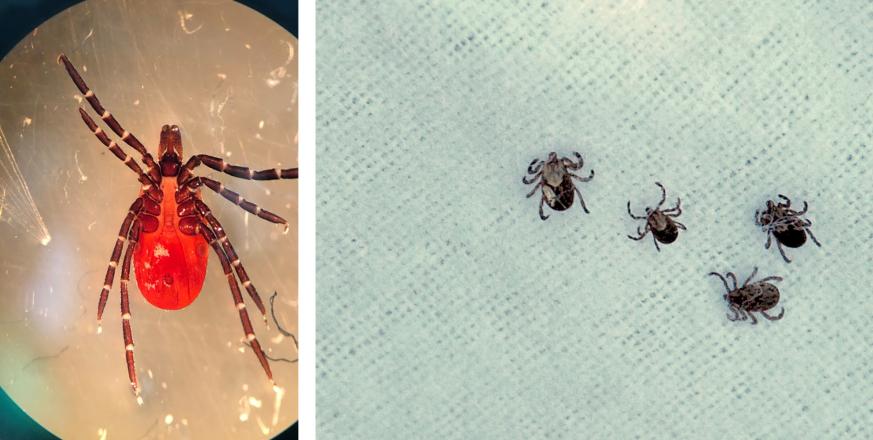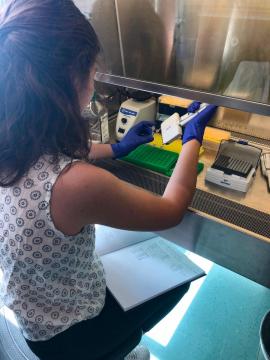Tick surveillance and community engagement at Jasper Ridge

Summary
Cases of tick-borne disease are on the rise in the US as ticks are expanding their distributions, and new tick species are introduced. In 2017 alone, the US Centers for Disease Control and Prevention noted a record number 59,349 cases of tick-borne illness, although the true count is likely much higher due to widespread underreporting. 
As vaccines for Lyme disease and many other tick-borne diseases are unavailable, our most effective strategy for preventing disease transmission is to frequently check for and promptly remove any attached ticks. This necessitates a strong understanding of the spatial patterns of disease risk, and effective communication of this risk to the general public. This project aims to address both of these needs for the Jasper Ridge community by combining active tick surveillance with citizen science tick submissions.
Active tick surveillance began this summer, with researchers in the Biology department collecting ticks by dragging a white cloth along vegetation at sites throughout Jasper Ridge. Individual ticks were then identified to species and if applicable, tested for tick-borne pathogens. Only two tick species have been found thus far during active surveillance: the western black-legged tick, which can transmit Lyme disease, and the Pacific Coast tick, which can transmit Rocky Mountain Spotted Fever. An adult female western black-legged tick (ventral surface) is shown in the photograph above left; Pacific Coast ticks clinging to a cloth used to sweep vegetation are shown above right. No black-legged ticks have yet tested positive for the Lyme disease bacteria (0/11), while a few Pacific Coast ticks (5/19) tested positive for a bacterium that is similar to the Rocky Mountain Spotted Fever pathogen but likely not harmful to humans. Active surveillance will continue annually from May to July, the peak tick activity period in Northern California.
To better understand the spatial dynamics of human tick-borne disease risk, we will also be collecting ticks submitted by visitors to Jasper Ridge. Any visitor, including students, field researchers, and docents, who encounters a tick while at the preserve, can contribute their tick with approximate location of exposure as part of this passive surveillance effort. There are two submission options, one for ticks found crawling on a person, and another if the tick has bitten the person. All submitted ticks in the first category will be identified to species and life stage, with this information being communicated to the submitter only if they opt to provide contact information. Analyzing user-submitted ticks will enable further investigation of the local processes influencing tick dynamics and disease risk, while also engaging the community in the process of tick surveillance and encouraging awareness of tick-borne diseases and tick bite prevention.



